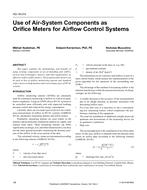The last few years have seen a dramatic expansion of the building programme in the Middle East area, attracting design and construction teams from all parts of the world to areas which were themselves developing their expertise as clients. The oil crisis of the early 1970’s created a situation where, it seemed, enormous funds were available for prestige projects and the speed of the building boom, combined with a relative inexperience both of the clients’ real needs and of the specific design problems of the Middle East, led to confusion. The rate of expansion has settled but significant briefing, financing and constructional difficulities remain.
The style of new buildings varies from the traditional heavy construction to the westernised glass office block type. The availability of low cost energy in the form of oil, which can be used as a prime mover in generation of electricity and de-salinisatior of water, has influenced the attitude to energy consumption but the early neglect of principle of conservation is passing and there are signs of greater care in use of energy. These factors when related to availability of materials and maintenance facilities, including the training of men, will, it is hoped, lead to a rationalisation of design approach in this area of the world.
The States which are trying to rapidily modernised and expand facilities for their own or expatriot populations provide a continuing need for rapid construction. This must be related to good design and efficient lase of resources. This paper will touch upon design factors but will concentrate on lessons which are being learned in the Arabian Gulf area.
Product Details
- Published:
- 1982
- Number of Pages:
- 5
- File Size:
- 1 file , 530 KB
- Product Code(s):
- D-HO-82-04-3
- Note:
- This product is unavailable in Russia, Belarus


